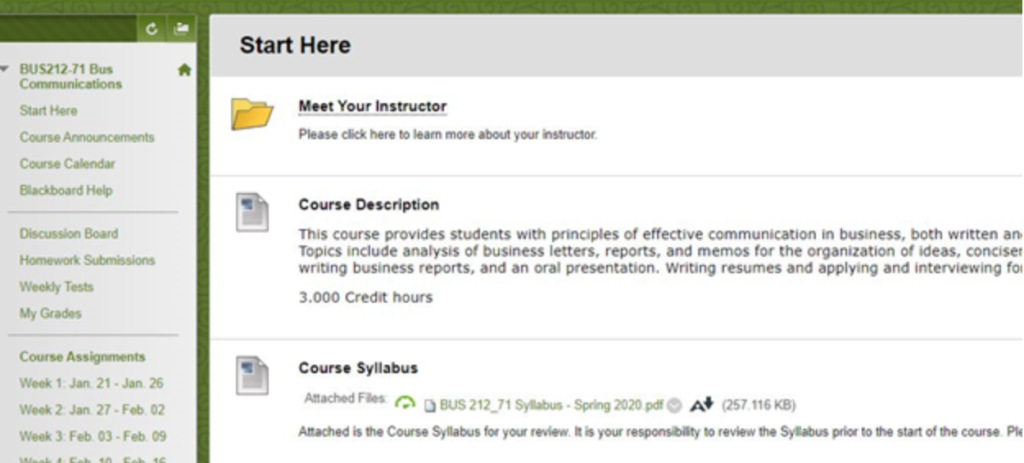As an adjunct professor, as news of the coronavirus (COVID-19) began to hit the United States over the last few weeks, I kept thinking, “Colleges and Universities are going to have to make some important decisions.” As March started, news of institutions developing emergency plans were being announced and within days, some colleges and universities began to close, some temporarily, some ending their entire semester, and a majority shifting from traditional face-to-face classes to digital education. My many years as a College Administrator, before coming to TargetX, provided me insight to questions institutions were beginning to consider – knowing the impact it would have on students and staff. The decisions they’re making are not done lightly.
For over 5 years, I’ve taught both online and hybrid courses at two different community colleges. Through my students, I learned that even if they aren’t the strongest in the online learning world, they can still succeed. Over the course of this week, I reached out to higher ed colleagues across the country for advice and best practices on online learning. From Presidents, to Deans, to Directors and Faculty, they all had one thing in common: they were working hard to train their faculty and staff on preparing for the possible online delivery of their courses. A resource many were using came from Online Learning Consortium (OLC), a “collaborative community of higher education leaders and innovators, dedicated to advancing quality and leadership in digital education.”
I attended several OLC webinars in the past two weeks, read up on articles in Inside Higher Ed, EDUCAUSE Review, and tracked and researched the latest trends on online education in hopes of providing a few tips for faculty as they potentially shift to the online learning environment. Here are 5 best practices I can offer in addressing this change.
1. Be Patient with Students – Get to Know Them
Just as this may be stressful for you, it’s equally stressful for our students. Take this time to build a relationship with your students. Rebecca Glazier found in her research (Building Rapport to Improve Retention and Success in Online Classes) that, “Both student-student interaction and student-faculty interaction are critical for engaging students… scholars have suggested that the difference in retention rates between online and in-person classes is due to the lack of contact between faculty and students.” Her research continued to show that “one way to offset isolation is through positive course interactions with the instructor, which can be a major influence on student success in online courses.” Simply put, make sure you’re providing the guidance they need, answering their questions, and getting to know their situations and learning styles.
2. Don’t Assume They Know Online Learning Platforms & Tools
At the start of each of my online courses, I ask my students to navigate through the class (both my institutions use Blackboard). I want them to explore how it works, where to find things, and get an overall feel for the learning environment. Think of it as the first day in a face-to-face class; they’re carefully picking their seats, observing what’s around them, and taking in their new settings. The screenshot below is how I layout my courses: making sure they know where to find the tools on how to use Blackboard, and have that “go-to” resource easily available if they get lost.

OLC provides a great “Quality Scorecard” that looks at the overall course design to ensure faculty have effective online learning activities. Also, every Learning Management System (LMS), has video tutorials on how to use their platforms (for faculty and students). The Blackboard Help section is designed specifically for students, and I would encourage any student who has never taken an online course to make use of this resource.
3. Be Specific on Course Instructions
I learned this lesson the hard way as a rookie professor several years ago. In an online course I was teaching, I required my students to conduct their final exam “mock job interview” with me using Zoom. Being an online class, I figured my students knew how to download applications or software and open an online video conference, which turned out to be a terrible assumption on my part. The amount of “hate” email I received from my students that week was horrible, and the stress I caused them while trying to get on the Zoom conference to complete their final exam was equally horrible.
OLC provided a great resource during their latest webinar, Using Live, Online Sessions to Support Continuity of Instructions. This “Teaching a Live, Online Session Checklist & Resource” document not only gives you a template to use in running an online session, it also gives you important reminders to ensure students understand exactly what they need to do to access the live session.
I also discovered, for the first few assignments, you need to be specific on how to access content folders and provide instructions on how to upload (or download) documents. This is where those tutorial videos can also come in handy. Keep remembering, this may be the first time a student is using an online learning environment. Be patient and don’t assume they know what they’re doing.
Resource Tip: If your institution uses Google Suite (G Suite or G Suite for Education), they’re rolling out free access to their Hangouts Meet video-conferencing capabilities through July 01, 2020. Other resources include Zoom, Skype, Doodle.
4. Be Available & Set Expectations on Your Online Availability
Just as it’s important to have office hours in the traditional sense, it’s equally important to make yourself available through virtual office hours. Lei Li and Jennifer Pitts from Columbus State University, found in their research that students are more likely to use virtual office hours than even traditional office hours. As students transition to online learning, your availability is extremely important.
As an adjunct, I typically have one night a week, at each institution, where I have standing virtual office hours. I put my Zoom link in our course and an hour before office hours start, I send out an email reminder with the link (so they have quick access to it). I keep the meeting open the entire time, and sometimes students show up, sometimes they do not. The important piece here, especially in teaching online, is to make sure your students know you’re not available 24/7. Setting this expectation right from the start will save any sanity you have left during this transition!
Resource Tip: If students don’t have the strongest internet connection, you can also use YoTeach! or GroupMe as a resource for communicating in real-time, via text.
5. Offer Online Resources/Support Services
Now, more than ever, this final best practice tip is important, but even without the current pandemic, there has been a struggle for institutions to figure out online student support services. As institutions are closing their campuses down, the need for Online Resources and Support Services will likely rise. Students are probably going to need access to the library, a tutoring center, or even mental well-being support services.
Kayla Westra, Dean of Institutional Effectiveness & Liberal Arts at Minnesota West Community and Technical College highlighted in late 2018, the complexity of this issue. In her EDUCAUSE Review article, “Online Student Services: What, Where, Who, When, How, and Most Importantly, Why” she hits on the importance of offering support services and the struggles most institutions face in-house on filling the need. The best solution I’ve discovered over time, is provide an abundance of resources with explanations for each of them. If they’re writing a research paper and you require MLA formatting, send them to Purdue Online Writing Lab. If they need to do research, send them to your school libraries online database, and if that doesn’t exist, provide them your local community library website and research database.
The final point I want to make here is through this entire process, no matter your role at the institution, you know the signs of a student struggling. If your institution has a retention system, like the TargetX Retention Suite, use the tool to issue alerts for at-risk students, or referrals to the tutoring or wellness center. Just because the classroom environment shifted, doesn’t mean our gut feelings on student needs are lower. Follow that gut-feeling!
Ultimately, the continuity of class delivery is critical to the success of every student, and that’s why, if possible, the transition of courses going from face-to-face to online is one of the biggest solutions to the pandemic hitting the entire education world. It’s important that faculty and administrators remember that this may be new and therefore challenging to some students, it may be stressful for others, but through it all, we need to work together, as a higher ed community, to ensure the success of every student.
We’re always ready to talk about student success, are you? Schedule a demo or call!
